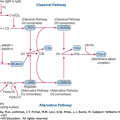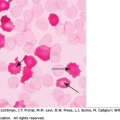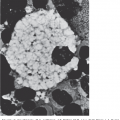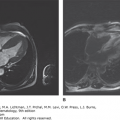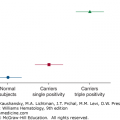INTRODUCTION
SUMMARY
Dendritic cells are a multifunctional group of cells that serve as sentinels of the immune system and thus regulate many immune functions.* Dendritic cells play a central role in initiating adaptive immune responses to pathogens and initiating antitumor immune responses. Dendritic cell receptors sense environmental stimuli and can respond rapidly to both foreign pathogens and danger signals derived from tissue damage or immune complexes. Through their capacity to present antigen to T cells in immune-activating or immune-dampening contexts, dendritic cells can both induce T-cell proliferation (activation) or lack of activation (tolerance). In this way, dendritic cells help regulate immune responses mediated by T cells and B cells of the adaptive immune system. This chapter describes the varied types and functions of this important class of cells.
Acronyms and Abbreviations:
CD, cluster of differentiation; CMV, cytomegalovirus; DC, dendritic cell; GM-CSF, granulocyte-monocyte colony-stimulating factor; GVHD, graft-versus-host disease; GVL, graft-versus-leukemia; Ig, immunoglobulin; IL, interleukin; M-CSF, monocyte colony-stimulating factor; MHC, major histocompatibility complex; NK, natural killer; Th, T helper; TLR, toll-like receptor; TNF, tumor necrosis factor; Tr, T regulatory.
*Deceased. Substantial portions of his contribution have been retained in the current version of this chapter.
FUNCTIONS OF DENDRITIC CELLS
Host defense is mediated by innate and adaptive immune responses, and dendritic cells (DCs) play essential roles in linking together innate and adaptive immunity.1,2,3 The innate immune response provides rapid resistance to pathogens, but the potency of innate responses does not increase following initial exposure. Adaptive responses, mediated by B and T lymphocytes, generate immune memory, resulting in more rapid and more potent responses following antigen reexposure (Chaps. 75 and 76).
DCs provide innate immune resistance through production of cytokines, including interleukin (IL)-12 and type I interferons, and by activating other innate lymphocytes such as natural killer (NK) cells, NKT cells, and γδ T cells (Chap. 75). Innate responses are most often initiated by “pattern recognition receptors” (Chap. 20), which respond to evolutionarily conserved molecules found in microbes, parasites and viruses.4,5 Pattern recognition receptors include toll-like receptors (TLRs), nucleotide-binding oligomerization domain-like receptors, retinoic acid-inducible gene 1-like receptors, and numerous C-type lectins. Pattern recognition receptors recognize a wide array of ligands, such as single- or double-stranded RNA, lipopolysaccharides, and other microbial constituents. DCs express pattern recognition receptors and respond to pattern recognition receptor agonists by becoming potent immunostimulatory cells and by presenting captured antigens to T cells in the context of major histocompatibility antigens. Pattern recognition receptors on DCs can also be activated via noninfectious stimuli induced by tissue damage and malignant cells, including uric acid crystals and heat shock and chromatin proteins. Such pathways are likely important for activating DCs toward tumor-associated antigens following transplantation or in disease states such as cancer or allergy.
Activated or matured DCs can prime resting NK cells, which then reciprocally act back on DCs, enhancing DC maturation and initiating adaptive immune responses.6 NK cells can also negatively regulate DC function by killing immature DCs, a feature that is important in NK mediated graft-versus-leukemia (GVL), without graft-versus-host disease (GVHD), following hematopoietic stem cell transplantation.7 Such immune crosstalk between NK cells and DCs, is emblematic of the exquisite interdependence and complexity of the immune response.8,9,10
Adaptive immunity imparts immune memory to the host, which allows a more rapid and more effective immune response to rechallenge with the same antigen. Adaptive immunity is mediated by B and T lymphocytes, but its induction is largely regulated by DCs. Immune memory increases the frequency and function of antigen-specific lymphocytes, leading to enhanced levels of protective antibodies, cytokines, and killer molecules. Through an elaborate series of gene rearrangements, hypermutation, and selection, antibody on B cells and T-cell receptors on T cells provide remarkable diversity and specificity. This array might be thought of as the largest combinatorial library of specificities in the world!
DCs function as sentinels of the immune system (Table 21–1)1,3,11 and provide a critical bridge between innate and adaptive immunity. Indeed, the presence of antigen and lymphocyte is rarely sufficient to induce adaptive immune responses. Rather, a third party, the DC system of antigen-presenting cells provides the pivotal immune initiation signal required to induce an adaptive immune response. DCs sense a wide range of environmental stimuli, producing cytokines, such as IL-12 and type I interferons that help stimulate immune responses. DCs express most types of TLRs, with specific subsets of DCs differentially expressing distinct TLRs; for example, plasmacytoid DCs express significant levels of TLR-7 and TLR-9.12 DCs can also respond to endogenous stimuli, ranging from inflammatory cytokines, including tumor necrosis factor (TNF)-α, IL-1, or interferons, to byproducts of cell death or tissue damage. DCs capture microbes and tumor cells, processing their component antigens for presentation to the adaptive immune system. DC activation, via innate immune receptors, leads to DC maturation and initiation of adaptive immunity. In addition to antigen processing and presentation, sentinel DCs produce chemokines and cytokines. They migrate to lymphoid tissues, where they recruit naïve antigen-specific lymphocytes and instruct their subsequent development.
| Sensors: rapid and appropriate differentiation in response to pathogen-associated molecular patterns and other signals |
| Sentinels: positioned in peripheral tissues to optimize antigen capture and migrate to lymphoid tissues |
| Tolerance: deletion and anergy of self-reactive lymphocytes and induction of regulatory T cells |
| Innate resistance: activation of innate lymphocytes, including NK and NKT cells, secretion of protective cytokines |
| Adaptive immunity: differentiation of quiescent, naïve T cells to form effectors, establishment of memory lymphocytes, antibody responses |
A variety of DC subsets exist and the biology of DC activation can vary significantly according to the exposure. During immunization, DCs initiate clonal expansion of T cells and can directly and indirectly influence the growth of B cells. In addition, DCs can modulate differentiation of lymphocytes, such that the properties of the lymphocytes are appropriate to the invading pathogen.13 For example, under the influence of DCs, T cells can preferentially produce interferon-γ (T-helper [Th] type 1 cells) to activate macrophages to resist infection by intracellular microbes; or IL-4, IL-5, and IL-13 (Th2 cells) to mobilize white cells to resist helminths; or IL-17 (Th17 cells) to mobilize phagocytes at body surfaces to resist extracellular bacteria.
An essential counterpart to adaptive immunity is adaptive tolerance, which is the silencing of cells with receptors reactive to self or harmless environmental antigens. T cells develop tolerance centrally in the thymus and peripherally in lymphoid organs.14,15 DCs play a role in inducing tolerance, especially with regard to T cells. DCs can silence self-reactive T cells, through either deletion or functional inactivation. DCs can also drive T cells to suppress immunity by expressing IL-10 (T regulatory [Tr]1 cells) or FOXP3.16
DENDRITIC CELL BIOLOGY
DCs are “antigen-presenting cells.” An antigen-presenting cell is any cell that uses its major histocompatibility complex (MHC) products (or other antigen-presenting molecules, such as the CD1 molecules that present glycolipids and lipoglycans) to bind and display (i.e., “present”) fragments of antigen to lymphocytes. DCs are more specialized or professional than other antigen-presenting cells. This is because DCs have efficient and regulated pathways for antigen uptake and processing, and DCs possess dozens of features that allow them to initiate and control immunity (Table 21–2). For example, when DCs mature in response to infection, hundreds, even thousands, of gene transcripts can be upregulated or downregulated.17,18
| Cell processes or dendrites and motility: numerous and continually probing |
| Antigen handling: specialized antigen uptake receptors and processing pathways for classic (MHC) and nonclassic (CD1 and others) presenting molecules, including cross-presentation onto MHC class I and CD1 |
| MHC class II products: high and regulated expression |
| Migration in lymphatics to lymphoid organs and localization to T-cell areas |
| Environmental sensing: multiple receptors for microbial and nonmicrobial products and exaggerated responses to the products |
| Cytokine receptors, including hematopoietins (flt3L and granulocyte-macrophage colony-stimulating factor, but not monocyte colony-stimulating factor, granulocyte colony-stimulating factor) |
| Chemokine receptors, especially for homing to tissues (CCR6) and lymph nodes (CCR7, CCR2) |
| Induction of peripheral tolerance via intrinsic and extrinsic pathways |
| Activation of innate lymphocytes (e.g., natural killer cells) |
DCs express a wide array of endocytic receptors, which enhance the efficiency of antigen capture, processing, and presentation. Many endocytic receptors are predicted to be C-type lectins, and in some cases their natural ligands have not been identified. DCs also express Fcγ and Fcε receptors, which recognize immune complexes, as well as scavenger receptors. Recognition of pathogens by DC receptors can have two outcomes. One outcome is immune activation followed by antigen presentation and development of a productive immune responses. Alternatively, pathogens may use DC receptors to evade the host immune response. For example, DC-SIGN (CD209) a lectin expressed on DCs, is used by HIV-1 and cytomegalovirus (CMV) to reach T cells and endothelial cells, respectively19,20; by Dengue virus to replicate within DCs21; and by Mycobacterium tuberculosis to trigger production of the suppressive cytokine IL-10.22
Following uptake, efficient processing of antigen yields peptides that bind to MHC class II and class I products. “Exogenous” antigens refer to molecules processed directly following uptake, whereas “endogenous” antigens are processed following biosynthesis in the antigen-presenting cell. Classic pathways of antigen presentation emphasize processing of “exogenous” antigens for presentation on MHC II–peptide complexes to CD4+ T lymphocytes, whereas “endogenous” antigens were targeted for presentation on MHC class I–peptide complexes to CD8+ T cells. However, it is now clear that there is significant overlap in these pathways such that exogenous antigens may also be presented on MHC I products to CD8+ T cells. This pathway is termed cross-presentation and is important for initiation of antitumor immune responses. Cross-presentation is well developed in DCs, especially those found in lymphoid tissues, and leads to either tolerance or activation of CD8+ T lymphocytes, depending upon the DC maturation stimulus.23 For instance, products of dying cells, from transplants, tumors, foci of infection, and self-tissues are endocytosed by DCs then presented on MHC Class I to CD8+ cells.24,25 Importantly, cross-presentation of antigens onto MHC class I can involve the proteasome and transporters for antigenic peptides, which are used in the presentation of endogenous antigens.
DCs are a major cell type involved in cross-presentation of proteins,26,27 and probably of lipids.28,29 Cross-presentation has been documented involving nonreplicating microbes, dying cells, ligands for the DEC205 receptor, and immune complexes, including antibody-coated tumor cells. This pathway allows DCs to induce tolerance or immunity to antigens not synthesized de novo in these cells. Fcγ receptors, in addition to mediating presentation, can influence DC maturation, either enhancing maturation through activating forms of the receptor or preventing maturation through inhibitory forms.30 Such consequences of antibody binding to DC Fc receptors, with regard to DC maturation and cross-presentation, are important features for consideration when trying to understand the use of antibodies as therapeutic agents.
Some DCs subsets also express the CD1 family of antigen-presenting molecules. For example, CD1a typically is found on epidermal Langerhans cells in skin, whereas CD1b and CD1c are expressed on dermal DCs. CD1 molecules present glycolipids, whereas microbial glycolipids are the best studied to date with regard to CD1a, CD1b, and CD1c. CD1d molecules on DCs also efficiently present the synthetic glycolipid α-galactosylceramide.31 This process leads to activation of distinct lymphocytes with a restricted T-cell repertoire, the NKT cells.32 NKT cells have significant potential as effector cells because they can produce large amounts of interferon-γ and lyse tumor targets.
Stay updated, free articles. Join our Telegram channel

Full access? Get Clinical Tree



